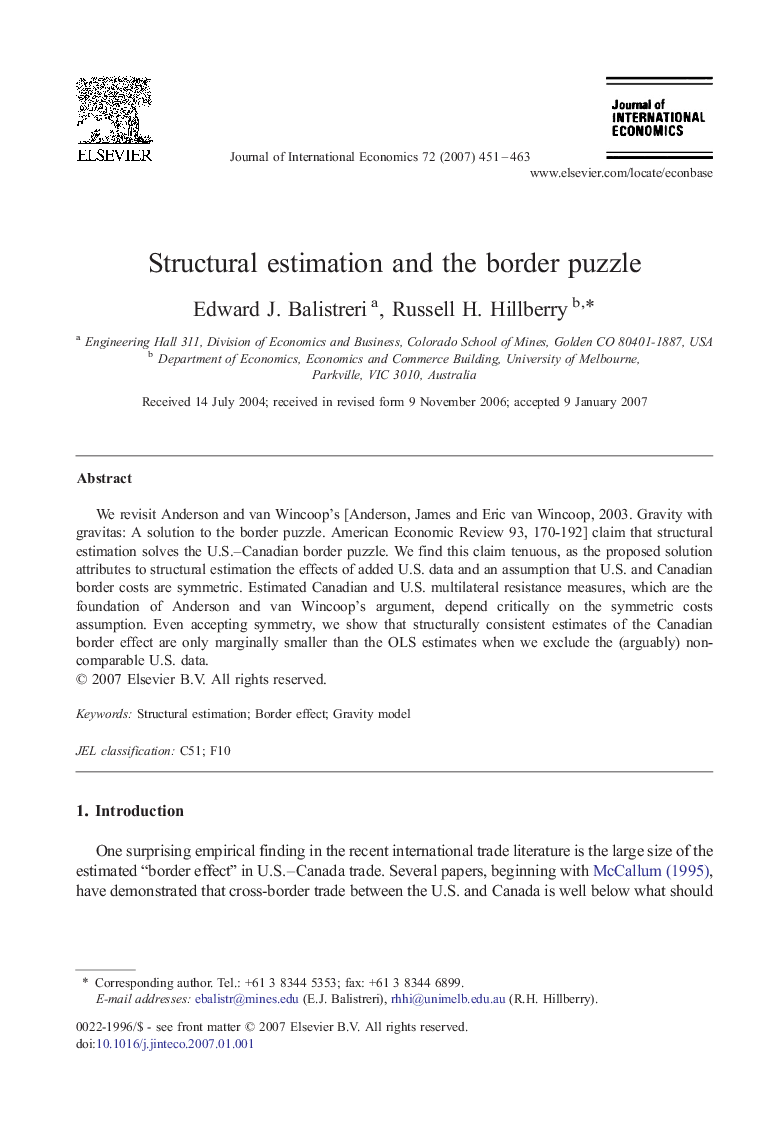| Article ID | Journal | Published Year | Pages | File Type |
|---|---|---|---|---|
| 963199 | Journal of International Economics | 2007 | 13 Pages |
Abstract
We revisit Anderson and van Wincoop's [Anderson, James and Eric van Wincoop, 2003. Gravity with gravitas: A solution to the border puzzle. American Economic Review 93, 170-192] claim that structural estimation solves the U.S.-Canadian border puzzle. We find this claim tenuous, as the proposed solution attributes to structural estimation the effects of added U.S. data and an assumption that U.S. and Canadian border costs are symmetric. Estimated Canadian and U.S. multilateral resistance measures, which are the foundation of Anderson and van Wincoop's argument, depend critically on the symmetric costs assumption. Even accepting symmetry, we show that structurally consistent estimates of the Canadian border effect are only marginally smaller than the OLS estimates when we exclude the (arguably) non-comparable U.S. data.
Related Topics
Social Sciences and Humanities
Economics, Econometrics and Finance
Economics and Econometrics
Authors
Edward J. Balistreri, Russell H. Hillberry,
